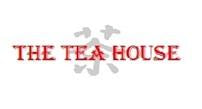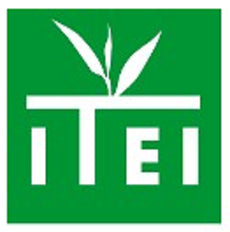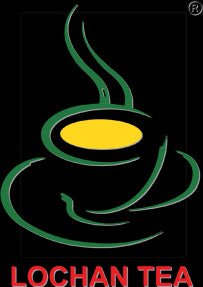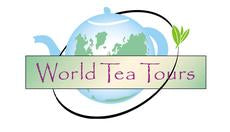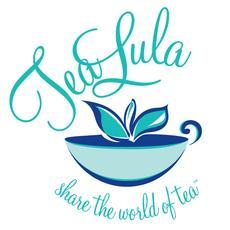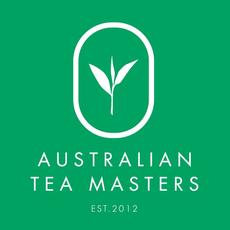
Water and Tea – A Paper
By Pierre Vrignaud.
Water is an essential topic as our cup of tea contains at least 98.5 percent of water. So unsuitable water will spoil even the best teas and optimal water will reveal the potential of even ordinary teas. This presentation is dealing with the impact of water quality on tea brewing. The first part presents a reminder of the importance of the water quality according to the Chinese tradition. Then, we shall turn to the West with the presentation of water analysis from the point of view of chemistry to describe water properties and how to use this information to choose the most suitable water. Finally, we shall discuss the presentation of the session about water and tea as conducted in our association.
Water and tea according to Chinese tradition
In China, the quality of water has, for a long time, been a subject of concern among tea masters. We are reminded that Lu Yu visited and tasted many springs during his journeys through China as he was discovering teas. He wrote, beside his well known treatise on tea (Cha Jing), a treatise on springs that unfortunately has been lost. Lu Yu did discuss the merits of different kinds of water in the Cha Jing:
“Of waters, use of mountain water is superior, river water is average, well water is inferior.”
Since the Song dynasty, tradition retains the following classification of waters to brew tea (reference: John Blofeld, The Chinese art of tea, 1985):
-
· Waters from a mountain spring forming on rocks without mosses or any vegetation;
-
· Water draw from a fast flowing river;
-
· Water from the wells;
-
· Other waters (rain, snow, dew), these ones are sometimes called “sky waters” in opposition with the previous ones called “earth waters.
Waters from mountain springs, considered as the best ones, are called “friends of the tea”. The tradition tells also that the infusion is optimal when prepared with water gushing from a spring near the tea garden. One well known example is brewing Long Jing tea with water from Hu Pao spring situated near the gardens where this famous tea is grown. Hu Pao means running tiger alluding to the story of the discovery of this spring by a monk dreaming of two tigers letting gush the water from the soil.
Insert pictures 1 and 2 approximately here. This interest for the quality of water used to brew tea appears through anecdotes relating tea masters’ extraordinary abilities to identify the origin of water. Thus Lu Yu was able to distinguish between water drawn in the middle of a river from water drawn near the banks.
Since the Tang dynasty, a lot of works have been published on Chinese springs (see examples in ancient Chinese texts translated in English: in Warren Peltier, The Ancient Art of tea. 2011). The most famous springs have been visited by officials and sometimes the Emperor himself. The Emperor and the rich tea lovers had water transported from quite distant springs.
A passage of the famous novel “The Dream of the RedMansion” (Hong Long Meng) testifies about the refinement of water and tea tasting. The story takes places in a Buddhist monastery where the abbotess is offering tea to the hero and some of his family members: “He tasted tea very carefully judging that its savor was of an incomparable subtlety and purity, and let out in endless compliments:
“Did you use last year rain water to brew this tea?” Asked her sister.
“For a person of your rank”, answered the young abbotess with a mocking laughter, “it’s rather vulgar not being able to taste water. This water is snow water that I collected five years ago on the plum flowers. I obtained only enough to fill this blue jug. Not resolving to drink it, I buried the jug in the ground. I opened it only this summer. How did you not identify it? Last year rain water would it have so subtle and pure? ” Cao Xueqin. Hong Lou Meng (circa 1750) Story XLI.
These kinds of reflections and stories about tasting water and tea can be found also in the Japanese tea tradition (see for example Sen Shogitsu XV, The Japanese way of tea. From its origins in China to Sen no Rikyu. 1998). In the West, there are also some examples of the importance of water for tea lovers. In the 19th century, a company was selling special water to brew tea to New Yorkers. When she is travelling, Queen Elisabeth the second is takes, in her luggage, liters of the water she wants to be used to prepare her tea.
Western science approach to water
The scientific tools offered by chemistry will allow us to understand which parameters can explain the water taste and its interaction with tea. This is not an expert presentation, only a notional summary helping tea lovers who are often laywomen and laymen in this matter to be able to use this information. For the chemist, water has a very important property: it can dissolve a lot of substances. The consequence of this property besides allowing us to brew tea, is that drinking water (spring and tap) contains lot of minerals. These elements, essential for healthy functioning of our bodies (for example calcium), are effect the different tastes of waters. A completely pure water like distilled water would not be really proper for dinking or at least we shall find it has a strange taste. By the way, we can say that if lightly minerals are recommended to brew tea, the use of very pure waters like snow or rain waters are also not the subject of a consensus among the tea masters.
Composition and characteristics of waters
Today, it’s very easy to be informed about the composition of spring waters thanks to the labels on the bottle or, for tap waters, thanks to the information provided by the water supply companies. I’m not sure that these regulations dealing with the display of water chemical analysis on the bottle label are mandatory worldwide but looking through my collection of bottle labels from the different countries I have been travelling, I notice that the display of more or less of information is becoming more and more frequent. The label presents a list of the minerals found in the water (like sodium: Na, Calcium: Ca, Magnesium: Mg, …) and positives or anions (OH, CO3). All these elements will play their part in the water taste (salty, acid, …) and the effect on tea brewing. These components can be synthesized through two global chemical notions the basic/acid character (pH) and the hardness (TH).
pH an index for the acid/basic characteristic
The acid or basic character is a very important characteristic of water which has an impact on brewing tea. Chemists appreciate this characteristic using the pH (abbreviation for pondus Hydrogenum that means weight of the hydrogen). pH indicates acidity/alkalinity of a substance determines the quantity of ions H (acid) and OH (base) present in the substance. When the quantity of both ions is equal, water (or more generally the substance) is considered as neutral and the pH value is estimated at 7. The pH scale ranges between 1 and 14. 7 is the middle of the scale. When pH value goes near 1, more acid is the substance (for example the pH of lemon juice has a value of 2). Higher the pH value more basic is the substance (for example the pH of soap is 13).
Usually the pH of drinking water varies between 6 and 8. Sparkling waters are more acidic. In general for bottled water, the pH is indicated on the label. The water supply company can give this information for tap water. As the participants of ITCC Cupping Events know, this analysis is easy to do using strip papers as the ones provided by ITCC with the cupping material (otherwise available on Internet or in aquarium friends’ shop).
From traditional knowledge or from tea retailers’ and teashop owners’ advice, we find a consensus recommending a neutral or slightly acid water (6 < pH < 7). To support this conclusion, remember that tea bushes prefer an acidic soil and that according to the Chinese tradition, a tea is best brewed with water surging from the spring that watered the tea garden. We remembered in the introduction the story of the Hu Pao spring near the Long Jing tea gardens in Hang Zhou. I brought back to Paris a bottle of Hu Pao water and made it analyze by Veolia (one of the most important water supply company in France). The results demonstrate that Hu Pao water is slightly acid (pH = 6.5) and quite soft (TH = 60). So, if you want to realize this wonderful experience to brew the best Lion Peak Long Jing without traveling to Hang Zhou and filling your pot at Hu Pao spring, you need only to find a still mineral water possessing these characteristics.
The water hardness and how to measure its TH
Calcium and magnesium are the elements which support water hardness: the more they are present in the water the harder it will be. By the way, these elements have a strong impact on taste, for example magnesium leaves a bitter taste. Hard water has less dissolving power than soft, hence a hard water will not retain as many of the tea components as a soft one. The infusion of tea brewed with hard water will appear darker than ones brewed with soft water which will be dull and, particularly with red tea (Hong Cha), we can observe a cloud, a film at the surface of the cup.
A quick and easy way to estimate the water hardness is to look at the quantity of calcium that it contains. If we want more precise measure, chemists use different more or less sophisticated measures, the Total hardness is simple to calculate from the information presents on the bottle label. The Total Hardness index is the sum of calcium and magnesium contained in one liter of water. Water hardness can be expressed in various units, German degrees (°dH), parts per million (ppm, mg/L, or American degrees), grains per gallon (gpg), English degrees (°Clark), or French degrees (°f). Tables are available on Internet to make conversion a very simple and practical one: http://www.cactus2000.de/uk/unit/masswas.shtml
Having studied French waters, I have been using the following formula to compute French degrees. These degrees are easy to convert into American degrees multiplying by 10.
* in milligramms/liter
40,1 and 24,3 are calcium and magnesium, respectively, atomic masses (in g/mol).
A classification of water relative to hardness have been established:
-
· 0-6°f (0-60 American degrees): very soft water (distillated, osmosis, rain).
-
· 6-11°f (60-110 American degrees): soft water (still mineral water like French Volvic).
-
· 12-18°f (120-180 American degrees): moderately hard water (tap water in low limestone regions).
-
· 18-30°f (180-300 American degrees): hard water (French Valvert, Evian, tap water in region rich in limestone).
-
· > 30°f (>300 American degrees): very hard (highly mineralized still spring water, sparkling spring water).
If you don’t have this information, you can use water hardness strips (available on Internet or in aquarium friends’ shop). There exist also a layman’s method using soap (add drops of liquid soap to the water to be tested till it foams, the sooner the softer. But, this method is too imprecise to test water for brewing tea.
Tap water Hardness depends of the geological background and of the treatment applied by the water supply company. In most countries, you can obtain more or less detailed information about the composition of the water they are sending in your tap, in general hardness is one basic piece of information they will provide as it has undesirable properties. Hard water is not harmful for human consumption but it has undesirable effects on pipes and devices like washing machines and dramatic effects on tea brewing. In most countries water supply companies prefer to deliver moderately hard water as a daily amount in calcium is recommended. By the way, the tasting reference for most water supply companies is the one of moderately hard water (for example the French company Veolia uses as references Evian (TH =30°f), this level of hardness gives an impression of well structured water in the mouth.
Nowadays, there exist a lot of solutions to soften water: from cartridges adapted to a jug (ideal for softening the water quantity needed for a pot of tea) to sophisticated systems branched at the entry of your house water supply. All the chemical components are eliminated through inverse osmosis. This is a nice solution simpler and cheaper than buying spring mineral water. Osmosis filtered waters are purified from all the mineral elements and undesirable chemicals like chlorine, but through the osmosis process, the structure of water is profoundly modified, for example the estimate of pH of osmosis filtered water has no meaning.
Chlorine
Chlorine is the main drawback for the taste of tap water. This element added by the water supply companies to disinfect drinking water makes tap water unsuitable to brew tea. For example, in the French coffee shops, they are using tap water heated in the espresso coffee machine, spoiling the few qualities that could improve the teabag. I think this is one of the reason for which there has been such a development of wine in France. Any joke put apart, the water supply companies are arguing that added chlorine (less than 0.2 mg per liter) should be undetectable by most people at a 25° Celsius temperature. And even, they tell you that if you put your pot of water in the refrigerator and drink it at a temperature around 5° Celsius, you will not taste any chlorine. Maybe, but tea lovers are drinking their tea at a higher temperature so the chlorine effect is not neutralized by the cold. Chlorine quantity can vary a lot according to the countries, the seasons, the water origin (spring or issued from used water treatment). But the presence of chlorine in tap water will spoil any good and not so good teas independently of its pH and TH. It’s one of the aim of osmosis filtering, to eliminate chlorine from tap water.
Learning from practice: Tasting water and tea in our association
Now, let’s put this all into practice as the truth is in our cup. Our session to estimate the impact of water quality on tea brewing consists of comparing the same tea brewed in the same conditions (time, temperature, teapot material) using different waters. As there is a palate and cognitive overload we compare at most 6 infusions in the same session. We retain for this comparison a very hard water (in general Hépar pH=7, TH=180°f) with high content in magnesium), tap water from the tearoom (pH = 7.8, TH = 27°f); a neutral and moderately hard (in general Evian pH=7.2, TH=30°f), a neutral and soft Volvic (pH = 7, TH = 6.2°f), an acid and very soft (low mineralized, equivalent to Hu Pao) Mont Roucous (pH = 6, TH =0.4°f ) and osmosis filtered water (Brita cartridge).
We conducted several sessions using Qimen tea (an intermediate grade) as this Hong Cha is in general known by the participants (so they are focusing on the water not on discovering the tea). It was infused for one minute at a 90° Celsius temperature. We use a half a liter teapot (porcelain). During the session, the participants are noted their impressions about the infusion (color, smell) and the taste. When all the waters had been tested they ranked the 6 infusions according to their preferences. Without any surprise, they didn’t like the hard water (Hépar) and the tap water, some participants showed very impressive grimaces while drinking both of these infusions. The favorite choice was divided evenly: one third preferred the Volvic and another third favored the osmosis filtered water. Some liked the neutral (Evian) and some the low mineralized (Mont Roucous). The comments revealed that the infusion was brighter with Volvic than with Evian, and that with Mont Roucous the infusion appeared a little bit to light, not structured enough.
We have introduced in some sessions, snow or rain water, both have been appreciated but less than Volvic or osmosis filtered water.
An interesting question is “is there an all purpose optimal water or are there preferred associations between tea families (and even inside families like wulongs - taking into account level of oxidation and roasting, or between Darjeeling flushes)? Are they differences according to the preparation (big teapots or Gong Fu Cha)? We had some sessions comparing Long Jing (Xi Hu) brewed with Volvic versus low mineralized water (Mont Roucous very similar to Hu Pao). The participants in these sessions appeared quite divided between both while with Hong Cha low mineralized water was not so much appreciated.
When we look to tradition, the use of spring water as a standard raises the argument that for the old masters the question of different water sources was not relevant. They were ranking water in the frame of tea preparation corresponding to their time (mostly green tea). So these questions seem largely open. We need to gain more information and to conduct more experimentation. I hope that this information will encourage the ITCC members to share their experiences and advice about this crucial topic for tea lovers.
Conclusion
Tea brewing cannot be summarized by chemistry alone, it’s an alchemy. Comparing modern and old time tea masters, we have to consider water energy. According to the old time wisemen, a water draw from a mountain spring or from rapids is full of energy. What is the energy of bottled water stocked for a short or long time in more or less good conditions? What about the energy of osmosis filtered water treated by sorcerers’ processes?
Then what is our best choice? As with many topics about tea and tea brewing, to answer this question we have to rely on tradition and experiment. The experimentations can be conducted in the spirit Dan Robertson’s recommendations for the ITCC Cupping Events “Cuppers are encouraged to explore “bracketing” infusion methods. These may include varying the amount of tea leaf infused, water temperature, water sources, infusion time, number of infusions, even different brewing vessels. Bracketed evaluations are optional but cuppers may offer their comments in a companion online evaluation form.” And last but not least while keeping in mind that there exist individual differences in tasting and preferences and best choices can vary from one tea lover to another.
Pierre Vrignaud is President of the French tea lovers’ association “Vapeurs de Thé sur une Tasse Chinoise », ITCC member.
"Vapeurs de Thé sur une Tasse Chinoise" ("Vapours of Tea on a Chinese Cup") is a French association created in 1998 in Paris by a few tea lovers, enchanted by green, white, yellow, Wu Long (Oolong), black (post-fermented) and red teas. Our objective is to help to improve our knowledge of Chinese teas.











